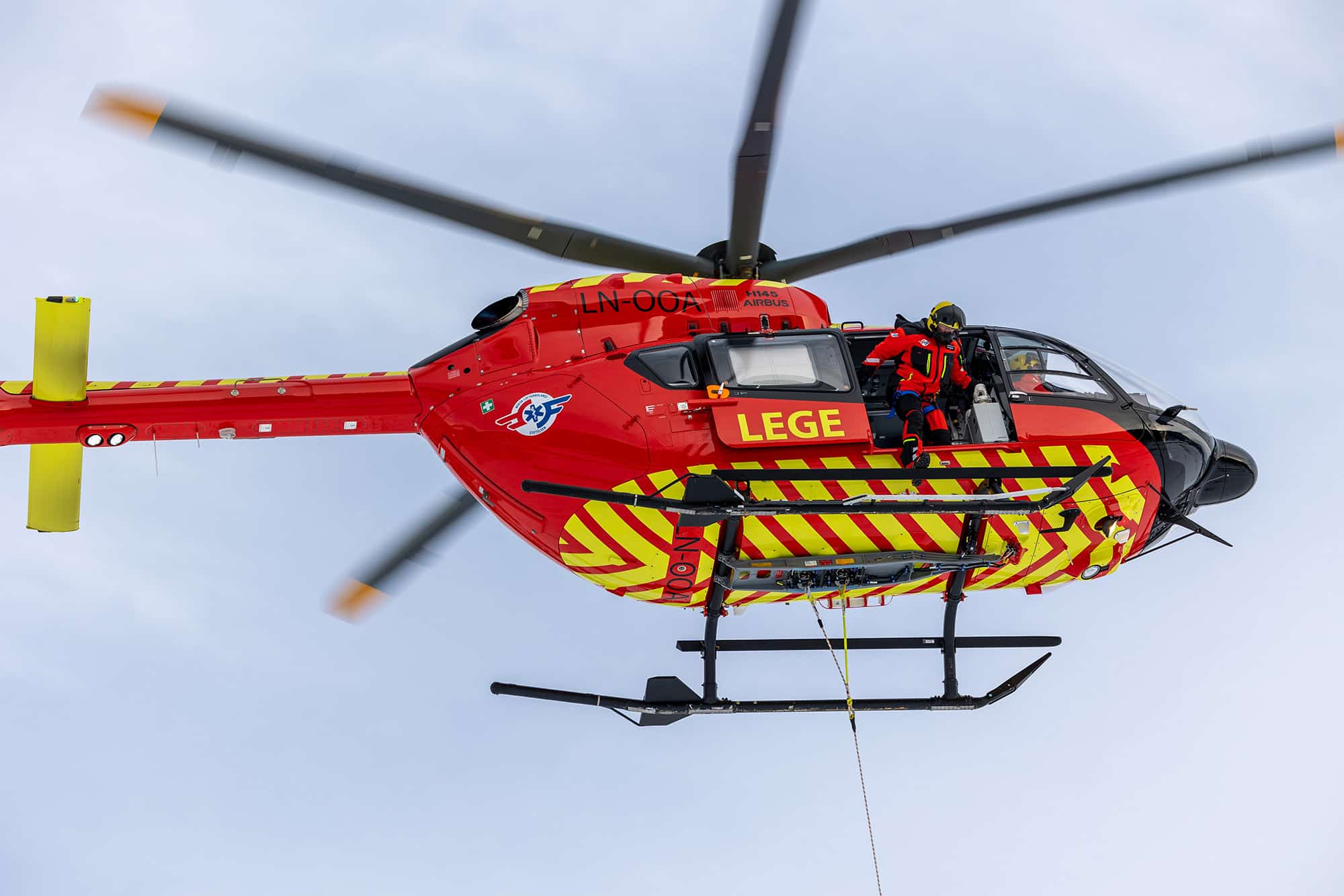
Norwegian Air Ambulance Foundation presents flying test lab to the international HEMS community
Aiming for the glass ceilings of prehospital critical care, the Norwegian Air Ambulance Foundation has invested in a cutting-edge helicopter fully dedicated to research, development and training. At the AirMed World Congress in late June, the tailored Research & Development Helicopter and some of its projects will be presented to the international HEMS community for the very first time.
Published: Jun 24, 2022
Text: Marianne Wennesland

After its arrival in Norway in late 2020, Airbus’ first five-bladed H-145 was fitted with a full set of medical interiors and replaceable, project dependant modules catering for a wide range of missions. Manned with crews mirroring the Norwegian helicopter emergency services, the Research & Development Helicopter has since been set to work for the Norwegian Air Ambulance Foundation’s highflying endgame:
“We aim to save more lives and health for the patients. The helicopter emergency service brings the hospital to the patient – wherever he or she is at the time of critical illness or injury – and we are constantly working on ways to make it even better,” explains Hans Morten Lossius, Secretary General of the Norwegian Air Ambulance Foundation:
“The R&D Helicopter is a game changer for what we can accomplish – not only in Norway, but also in collaboration with relevant international partners. As far as we know, it is the only helicopter in the world dedicated to HEMS improvement alone. It allows us to conduct testing on new procedures and equipment, collect data for our research projects and provide training without relying on rotating a helicopter out of the helicopter emergency services.”
Taking the helicopter emergency services to new heights
At the AirMed World Congress in Salzburg, June 28-30, the Norwegian Ambulance foundation will present the R&D Helicopter to the international HEMS community for the first time. It will also present a handful of the projects selected to give this test lab a flying start, including the following:
- Closing the gap on brain stroke treatment: The Norwegian Air Ambulance Foundation has done extensive research on providing brain stroke diagnostics and treatment by mobile stroke unit (MSU). In comparison with normal emergency response, patients met by the MSU were treated within the first golden hour four times as often and 17 minutes quicker, which constitutes a difference of 34 million brain cells. The foundation now aims to take prehospital CT scanning further and is working on concepts compatible with the helicopter emergency service and remote emergency sites.
- Enabling swift and secure helicopter emergency response in challenging weather conditions: The Norwegian Air Ambulance Foundation continues to expand its extensive grid of pre-set flight corridors, weather camera stations and related innovation. The system allows efficient mission planning and caters for flying in low visibility – or even blindly – and as low as 60 metres above the ground, which reduces the risk of rotor icing. It is utilized not only by the helicopter emergency services, but also by Norway’s joint rescue coordination centres, medical emergency response dispatch centres, police force, army, etc.
- The future HEMS helicopter: The Norwegian Air Ambulance foundation works closely with Airbus and Aerolite – manufacturers of helicopters and their medical interior – on developing the HEMS helicopters to better meet the needs of the service. One part of this is altering the medical cabin: To tailor it to the work of the physician in order to improve safety and enable the best critical care possible.
International collaboration for the greater good
In presenting the R&D Helicopter and its projects, Secretary General Lossius hopes to spark further dialogue and international collaboration vital in improving the future of HEMS:
“Relatively speaking, the world of helicopter emergency services is small, and international collaboration benefits patients worldwide: It is vital in securing solid data for research, developing new solutions and improving flight operations and rescue missions and – all of the aspects crucial for taking the helicopter emergency services to the next levels,” he says.
“We are grateful for our current collaboration with health services, research communities and HEMS-operators, as well as important industry partners in other countries. At AirMed 2022 we will continue our ongoing conversation with them about current and future projects. We also hope to join forces with additional stakeholders for the greater good.”
